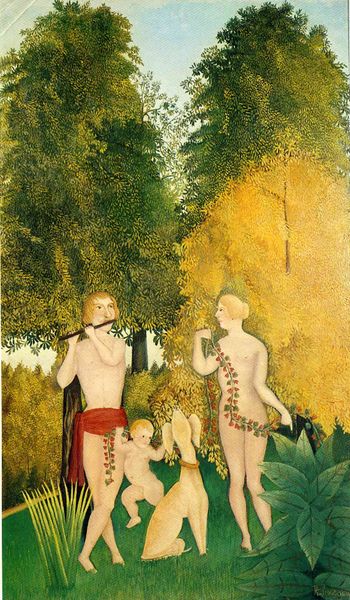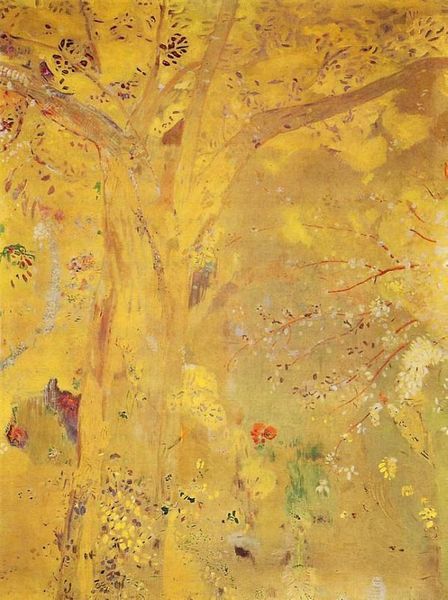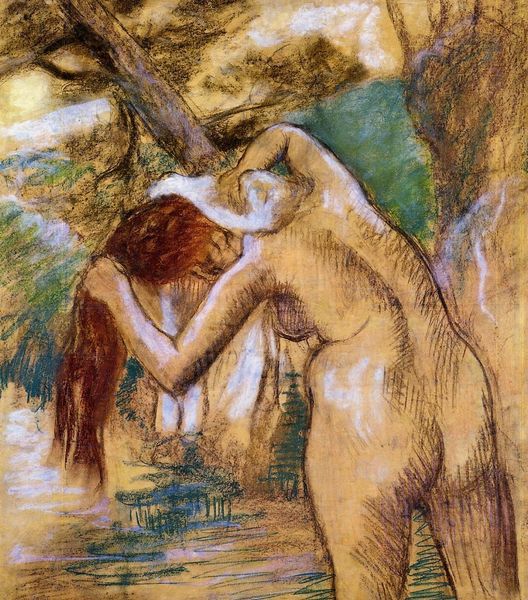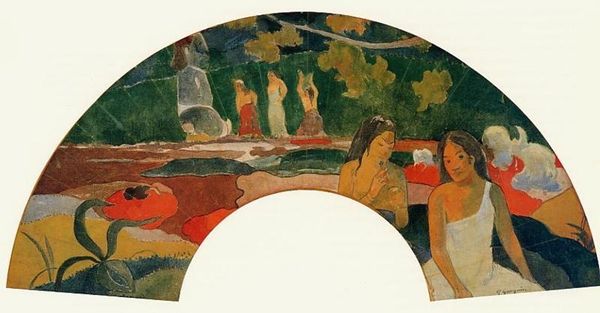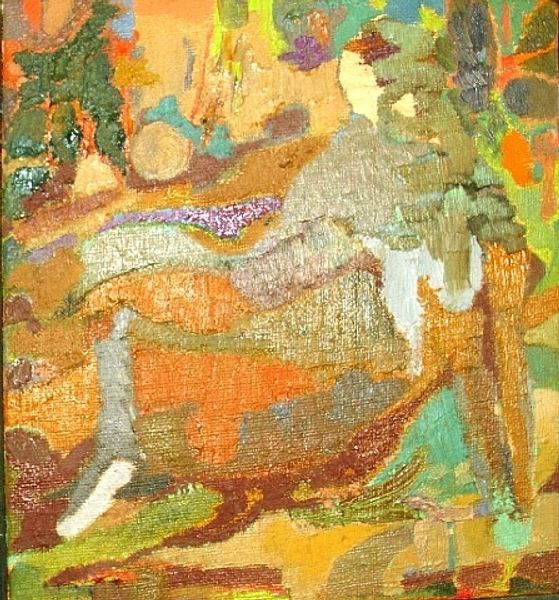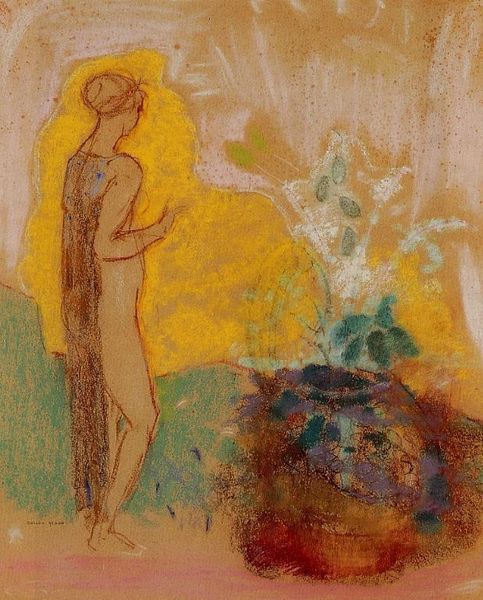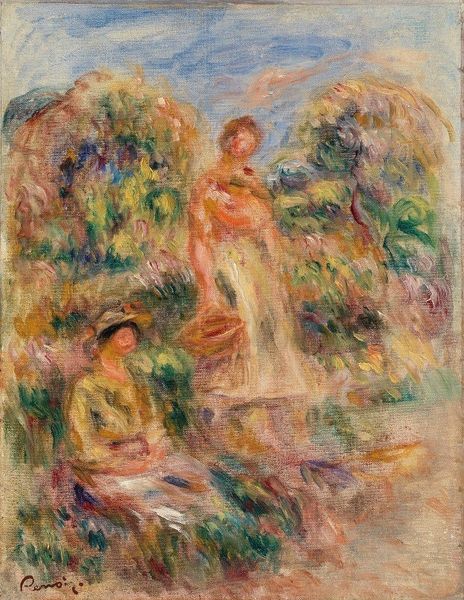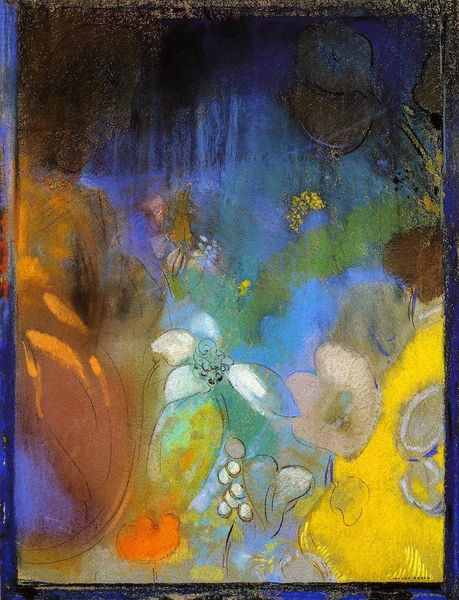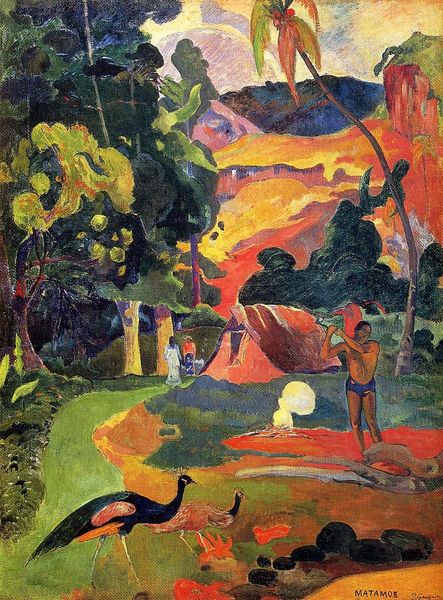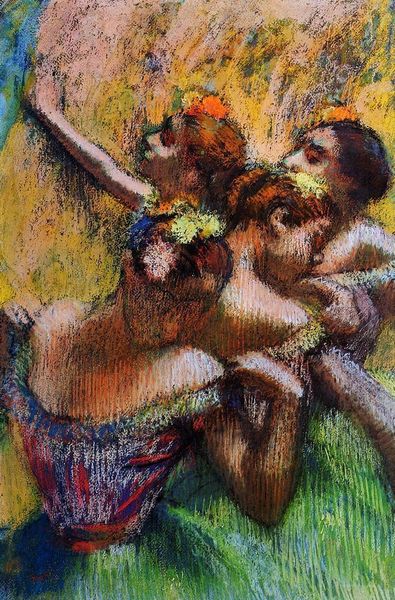
drawing, painting, watercolor
#
drawing
#
painting
#
landscape
#
figuration
#
oil painting
#
watercolor
#
nude
#
modernism
#
watercolor
Dimensions: sheet: 25.24 × 20.32 cm (9 15/16 × 8 in.)
Copyright: National Gallery of Art: CC0 1.0
Curator: Looking at Romare Bearden's work "After the Bath," created between 1970 and 1973, I'm immediately drawn to the mood it evokes. There’s a sort of humid tranquility...the hazy light filtering through dense foliage. Editor: I see something different initially. To me it's unsettling. There’s a sense of vulnerability, a pre-colonial Caribbean or perhaps even imagined African space, but the gazes of the figures elude us. Who are these women and how did they come to be situated here within the modernist painting? Curator: Those women embody a recurring motif for Bearden – the Black female figure as muse and matriarch. Bathing is an age-old purification ritual, rich in artistic interpretations from classical to impressionistic depictions of the female form. Here, he synthesizes that archetype through a decidedly Black lens. The overall composition creates a feeling of entering a sacred space... Editor: Precisely. This echoes Bearden’s commitment to challenging racial hierarchies in art, to insert Black figures into that "sacred" canon which has systemically excluded them. Considering the dates this watercolor painting was produced, this work is situated directly amid the Black Arts Movement, which sought to reimagine Black identity beyond the bounds of white representation. Bearden invokes these layered symbolic histories. Curator: You see, that interplay is essential, isn't it? These figures feel timeless, almost iconic, but they're very specifically placed within this vibrant landscape of greens and earthy tones. I read echoes of Gauguin, and his paintings of Tahitian women. There’s even that bright celestial orb. A moon, or maybe the sun in its descent or rise above the figures. Editor: Right, but let’s push that further – Bearden's art, at its heart, is about claiming space and resisting erasure. Here, he resists dominant narratives by decentering them, in pursuit of centering Black women, positioning them both within and defiantly outside of that history. What would they have thought of Gauguin, I wonder? How would the feel of their bodies changed during the long trip, on a ship across the waters of the Middle Passage? Curator: This image holds within it generations of symbolism, it makes you pause, consider. And maybe to see it in its own specific light. Editor: Absolutely, and to grapple with its complex layers, refusing any singular or straightforward reading. It embodies art's power to unsettle and provoke crucial dialogue across time.
Comments
No comments
Be the first to comment and join the conversation on the ultimate creative platform.

